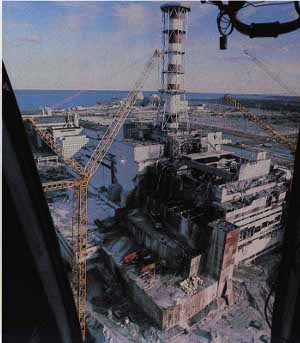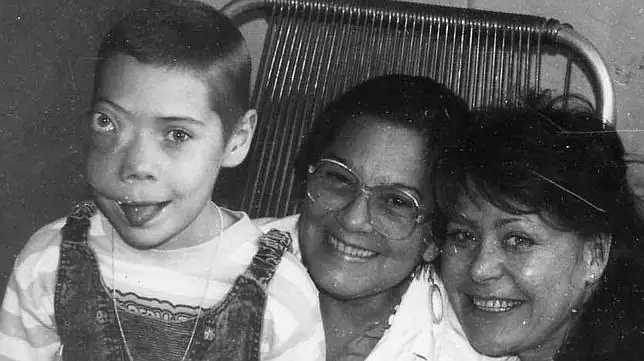chernobyl disaster
The Chernobyl disaster was a catastrophic nuclear
Nuclear Power Plant in Ukraine, which was under the
direct jurisdiction of the central authorities of the Soviet
Union. An explosion and fire released large quantities of
radioactive particles into the atmosphere, which spread
over much of the western USSR and Europe.
The Chernobyl disaster is widely considered to have
been the worst nuclear power plant accident in history,
and is one of only two classified as a level 7 event on
the International Nuclear Event Scale (the other being
the Fukushima Daiichi nuclear disaster in 2011). The
battle to contain the contamination and avert a greater
catastrophe ultimately involved over 500,000 workers
and cost an estimated 18 billion rubles The official
Soviet casualty count of 31 deaths has been disputed,
and long-term effects such as cancers and deformities
are still being accounted for.

Accident
increase, leading to explosions in its four suffered a
catastrophic power
core. This dispersed large quantities
of radioactive fuel and core materials
into the atmosphere and ignited the
combustible graphite moderator. The
burning graphite moderator
increased the emission of radioactive
particles, carried by the smoke, as
the reactor had not been
encased by any kind of hard containment vessel. The
accident occurred during an
experiment scheduled to test a
potential safety emergency core cooling feature, which took
place during a normal shutdown procedure.
Causes
Operator error
There were two official explanations of the accident: the first,
later acknowledged to be erroneous, was published in
August 1986 and effectively placed the blame on the power
plant operators. To investigate the causes of the accident
the IAEA created a group known as the International Nuclear
Safety Advisory Group (INSAG), which in its report of 1986,
INSAG-1, on the whole also supported this view, based on
the data provided by the Soviets and the oral statements of
specialists.[79] In this view, the catastrophic accident was
caused by gross violations of operating rules and
regulations. "During preparation and testing of the turbine
generator under run-down conditions using the auxiliary
load, personnel disconnected a series of technical protection
systems and breached the most important operational safety
provisions for conducting a technical exercise."[80]:311
The operator error was probably due to their lack of
knowledge of nuclear reactor physics and engineering, as
well as lack of experience and training. According to these
allegations, at the time of the accident the reactor was being
operated with many key safety systems turned off, most
notably the Emergency Core Cooling System (ECCS), LAR
(Local Automatic control system), and AZ (emergency power
reduction system). Personnel had an insufficiently detailed
understanding of technical procedures involved with the
nuclear reactor, and knowingly ignored regulations to speed
test completion

Effects
International spread of radioactive substances
It was Sweden's search for the source of radioactivity,
after they had determined there was no leak at the
Swedish plant, that at noon on 28 April led to the first
hint of a serious nuclear problem in the western Soviet
Union. Hence the evacuation of Pripyat on 27 April 36
hours after the initial explosions, was silently
completed before the disaster became known outside
the Soviet Union. The rise in radiation levels had at
that time already been measured in finland, but a civil
service strike delayed the response and
publication.The initial evidence that a major release
of radioactive material was affecting other countries
came not from Soviet sources, but from Sweden,
where on the morning of 28 April workers at the
Forsmark Nuclear Power Plant(approximately 1,100
km (680 mi) from the Chernobyl site) were found to
have radioactive particles on their clothes.

Human impact
The Chernobyl Forum first met on 3 February 2003 for
a three-day meeting. It consisted of the International
Atomic Energy Agency (IAEA), other United Nations
organizations (FAO, UN-OCHA, UNDP, UNEP,
UNSCEAR, WHO, and the World Bank), and the
governments of Belarus, Russia, and Ukraine. A
second meeting was held on 10–11 March 2004, and
a third on 18–20 April 2005. The aim of the Forum
was to "scientifically clarify the radiological
environmental and health consequences of the
Chernobyl accident, to provide advice on and to
contribute to a scientifically sound remediation and
health care programmes, and to consider the
necessity of, and opportunities for continued
research/learning lessons.
The following images are not suitable
for the faint
hearted,
who does not want to
see retire ... and do not blame me
if they give you nightmares




No hay comentarios:
Publicar un comentario